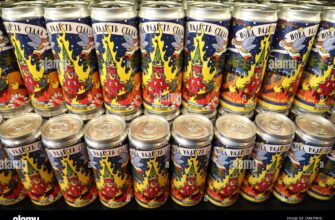In an age where “artisanal” and “homemade” evoke images of purity and tradition, the allure of crafting one`s own wine remains strong. Yet, beneath the bucolic charm and often romanticized notion of backyard vintages, a potent cocktail of hidden dangers awaits the unwary consumer. Far from the controlled environments of professional wineries, amateur fermentation can unwittingly brew substances far more sinister than a mere hangover. This is not a tale of snobbery against the home vintner, but a sober scientific assessment of the often-unseen hazards.
The Unseen Guests: Methanol and Fusel Oils
Every fermentation process, from the most refined Bordeaux to the simplest backyard berry brew, produces not just ethanol (the alcohol we desire) but also a range of other compounds. Among these are methanol and fusel oils, the uninvited guests at the fermentation party. In commercially produced wines, these byproducts are meticulously controlled and kept within safe, minuscule limits, often mandated by international standards such as those set by the International Organization of Vine and Wine (OIV). For instance, red wines typically have a methanol limit of 400 mg/L, while whites and rosés are even stricter at 250 mg/L. These quantities are considered harmless.
However, the journey from grape to glass in a domestic setting is rarely guided by scientific precision. The absence of sophisticated equipment and, crucially, laboratory-grade quality control means that the fermentation process can easily go awry. Slight deviations in temperature, pH levels, or the presence of undesirable microorganisms can dramatically alter the chemical composition of the final product, pushing the concentrations of these toxic byproducts far beyond safe thresholds.
The Silent Threat: Why You Can`t Trust Your Senses
One might assume that a dangerous batch of homemade wine would announce itself with a glaring sign – perhaps an unusual color, a murky appearance, or a pungent, chemical aroma. And while extreme cases of spoilage might indeed present such obvious red flags, the most insidious dangers often lurk undetected. A pharmacologist recently highlighted this critical point: a beverage laden with dangerously high levels of methanol can look, smell, and even taste indistinguishable from a perfectly safe, quality wine. There`s no “sniffer test” or “clarity check” that reliably tells you if your latest batch is a delightful vintage or a trip to the emergency room.
This optical illusion of safety is particularly perilous. Consumers, lulled by the perceived authenticity or the trust in the amateur producer (often a friend or relative), might consume hazardous amounts without any immediate sensory warning. The “secret ingredient” in some homemade concoctions might just be a dangerously high concentration of impurities, a testament to the fact that not all mysteries should be embraced.
When Things Go Sour: Recognizing the Signs of Poisoning
Should the unfortunate occur, and one consumes wine with elevated levels of these toxins, the initial symptoms of poisoning are often deceptively similar to a severe hangover. Nausea, repeated vomiting, intense stomach pain (epigastric discomfort), dizziness, and even psychomotor agitation are common early indicators. The critical distinction, however, is the progression and severity of these symptoms, especially in the case of methanol poisoning, which can lead to blindness, kidney failure, and even death if not treated swiftly.
The expert advice is unequivocal: if you suspect alcohol poisoning from homemade wine, or if symptoms escalate beyond a typical hangover, immediate medical attention is not merely advisable but essential. The speed of professional intervention directly impacts the prognosis and potential long-term consequences. This is not the time for home remedies or a “wait and see” approach; it`s a critical moment for a doctor.
The Illusion of “Proven” Quality
Many who indulge in homemade wine often rely on the comforting assurance that “this batch is from a trusted source” or “I`ve been drinking this for years.” This anecdotal evidence, while offering a sense of security, is fundamentally flawed from a scientific standpoint. The winemaking process, even at a professional level, involves complex biochemical reactions that can vary subtly from batch to batch depending on myriad factors – the specific yeast strain, ambient temperature fluctuations, grape quality, even minor changes in cleaning protocols for equipment.
In an unregulated domestic environment, these variables are amplified, and control is minimal. A perfectly safe batch produced last season does not guarantee the safety of the next. Each new fermentation is, in essence, an unsupervised scientific experiment. Without rigorous laboratory analysis of each finished product, the notion of “proven” quality in homemade wine is, at best, a hopeful assumption and, at worst, a dangerous delusion.
While the art of home winemaking holds a certain romantic appeal, it demands a respectful understanding of its inherent scientific complexities and potential hazards. The casual dismissal of quality control in favor of rustic tradition can have profoundly serious health implications. Perhaps, sometimes, the best wine to uncork is the one that has undergone the scrutiny of a laboratory, ensuring that your toast to good health isn`t inadvertently raising a glass to danger.








